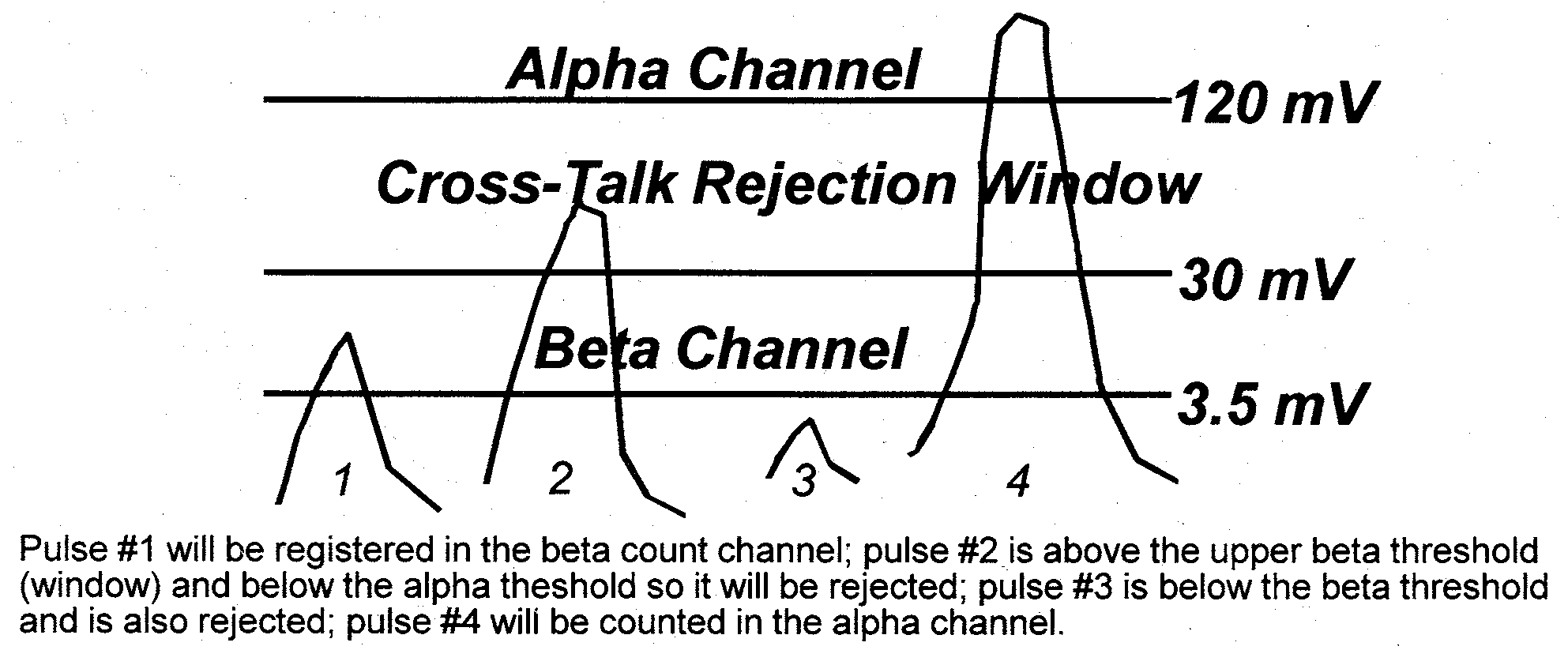Determining alpha-beta scintillation or proportional detector operating voltage, counter thresholds, and window parameters requires an understanding of the mechanics involved in simultaneous alpha/beta discrimination. The parameters involved in determining the alpha-beta detector operating points are: maximum alpha and beta efficiency, minimizing background count and "cross-talk" between alpha and beta counting channels, and uniformity across the detection area.
The counter — Ludlum Model 2224 used in this example — simultaneously counts and discriminates the alpha and beta pulses from the phoswich scintillation or proportional detector. The counter incorporates a lower and upper beta threshold (referred to as the beta window) and an alpha threshold. The thresholds are adjustable and are typically set: beta threshold = 3.5 mV, beta window = 30 mV, and alpha threshold = 120 mV. Detector operating voltage (HV) is adjusted to increase or decrease the pulse amplitude above and below the thresholds to optimize count efficiency and particle discrimination.

The alpha to beta pulse amplitude differential is primarily produced by the detector. Proportional detectors will differ from scintillators and detectors may differ from design and manufacturer. Detector HV (coarse adjust) and counter thresholds (fine adjust) can be varied to optimize counting efficiency versus particle cross-talk. The threshold settings illustrated above have been found to be the optimum parameters for the Ludlum Model 43-89 Alpha-Beta Scintillator and the Model 2224 Scaler-Ratemeter. The "cross-talk rejection window" between the beta window and the alpha threshold reduces alpha to beta and beta to alpha cross-talk. Ludlum alpha-beta detectors and counters specify cross-talk at ≤ 1% beta's in the alpha count channel and ≤ 10% alpha's in the beta count channel. These parameters are defined as:
